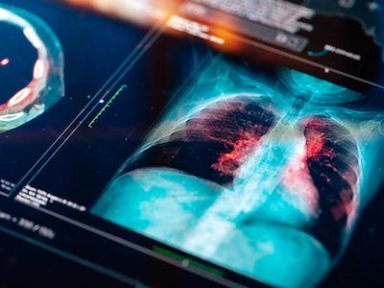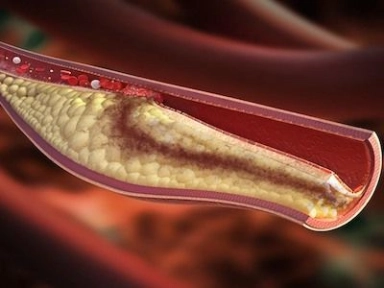{
event: "article_read",
name: `GAPS trial: Low-dose LMWH and GCS in in elective surgical inpatients at moderate or high risk VTE`,
author: ``,
tags: `Thrombosis`,
publication_date: ``,
interaction_type: "content"
}
GAPS trial: Low-dose LMWH and GCS in in elective surgical inpatients at moderate or high risk VTE
Compression stockings in addition to low-molecular-weight heparin to prevent venous thromboembolism in elective surgical inpatients in need of pharmacological thromboprophylaxis: the GAPS trial
In the GAPS non-inferiority randomized controlled trial (RCT) in elective surgical inpatients at moderate or high risk of venous thromboembolism (VTE), administration of pharmacological thromboprophylaxis alone was non-inferior to a combination of pharmacological thromboprophylaxis plus graduated compression stockings (GCS).
Main Takeaway
- In elective surgical inpatients with moderate or high risk of VTE requiring pharmacological thromboprophylaxis; low-molecular-weight heparin (LMWH)-alone was non-inferior to LMWH + GCS in the overall population.
- Non-inferiority of LMWH was sustained in the subgroup analyses based on age (<65 or ≥65 years) and baseline VTE risk (moderate or high risk).
- Primary outcome event (VTE) occurred in 1.7% vs 1.4% of the patients in LMWH group vs LMWH + GCS group (risk difference = 0.3% [95% confidence interval {CI}: –0.65% to 1.26%]; P < 0.001).
- For the overall trial population, there was no evidence of a difference in the secondary outcomes (quality of life or adverse events) between the two treatment groups (LMWH group vs LMWH + GCS group).
- Based on the study findings GCS may be unnecessary for most elective surgical patients.
Why This Matters
- Surgical patients are at an increased risk of VTE. Although, the guidelines recommended both pharmacological thromboprophylaxis and mechanical thromboprophylaxis in surgical patients with moderate or high risk of VTE, use of GCS was found to be associated with undesirable effects in the real-world.
Study Design
- The GAPS trial was a pragmatic, prospective, non-inferiority RCT (randomization [1:1]: LMWH [intervention] or LMWH + GCS [standard care]; trial period: May 2016 to January 31, 2019; N =1,905; sites: seven NHS hospitals in England).
- Key inclusion criteria: Elective surgical inpatients aged ≥18 years with moderate or high risk of VTE
- Key exclusion criteria: Contraindications to LMWH; contraindications to GCS; thrombophilia or thrombogenic disorder; need for therapeutic anticoagulation; previous VTE; and pregnancy
- Primary endpoint: Symptomatic or asymptomatic VTE up to 90 days after surgery
- Secondary endpoints: Quality of life over 90 days; compliance with LMWH and GCS; and overall mortality
Key Results
- Of the 1,905 patients randomized, 17 were excluded post randomization (overall population: N = 1,888 [LMWH {N = 948} group vs LMWH + GCS group {N = 940}: mean age = 59.3 vs 58.1 years; females = 63.4% vs 63.2%]).
- Overall, 1,858 patients had surgery (LMWH group vs LMWH + GCS group: 937 vs 921 patients)
- Treatment received (LMWH group vs LMWH + GCS group): (1) LMWH + GCS = 37 vs 750 patients; (2) LMWH alone = 758 vs 21 patients; (3) GCS alone = 18 vs 142 patients; and (4) Neither LMWH nor GCS = 124 vs 8 patients
- Overall, 1,858 patients had surgery (LMWH group vs LMWH + GCS group: 937 vs 921 patients)
- Primary outcome (intention-to-treat analysis): VTE event occurred in 1.7% (16/937) vs 1.4% (13/921) of the patients in LMWH group vs LMWH + GCS group (risk difference = 0.3% [95% CI: –0.65% to 1.26%]; P < 0.001 [non-inferiority of LMWH-alone was shown])
- Non-inferiority of LMWH was sustained in the subgroup analyses based on age (<65 or ≥65 years) and baseline VTE risk (moderate or high risk).
- Secondary outcomes (overall population [LMWH group {N = 948} vs LMWH + GCS group {N = 940}]):
- EuroQol-5 Dimensions, five-level version, n; mean: 774; 0.856 vs 743; 0.843 (mean difference = 0.011 [95% CI: –0.009 to 0.031; P = 0.272])
- EuroQol-visual analogue scale, n; mean: 773; 80.2 vs 743; 80.7 (mean difference = –0.29 [95% CI: –1.94 to 1.37; P = 0.732])
- Compliance with GCS (stockings worn for 75% of the total re-admission time), n (%): 37 (4.0) vs 750 (81.4)
- Compliance with LMWH (received all prescribed LMWH doses), n (%): 768 (82.0) vs 755 (82.0)
- Complications, overall mortality, and serious adverse events (SAEs) (overall population [LMWH {N = 779} vs LMWH + GCS {N = 787} vs GCS {N = 160}vs neither {N = 132}]):
- GCS-related complications, n (%): 2 (0.3) vs 50 (6.4) vs 5 (3.1) vs 1 (0.8 [wore stockings for <1 hour, classified as not wearing stockings])
- Adverse reactions to LMWH, n (%): 6 (0.8) vs 2 (0.3) vs 0 (0) vs 0 (0)
- Overall mortality, n (%): 2 (0.3) vs 0 (0) vs 0 (0) vs 1 (0.8)
- Number of patients with a SAE: 92 (11.8) vs 103 (13.1) vs 5 (3.1) vs 10 (7.6)
- Total number of SAEs: 110 vs 112 vs 5 vs 12
Limitations
- Few patients (15%) missed the duplex ultrasound scan, which could have helped detect further asymptomatic DVT.
- The event rate might have been potentially overestimated.
- Patients aged ≥65 years with moderate risk of VTE were underrepresented.
- Shalhoub J, Lawton R, Hudson J, Baker C, Bradbury A, Dhillon K, et al. Compression stockings in addition to low-molecular-weight heparin to prevent venous thromboembolism in surgical inpatients requiring pharmacoprophylaxis: the GAPS non-inferiority RCT. Health Technol Assess. 2020;24(69):1–80. doi: 10.3310/hta24690. PMID: 33275096.
Related articles
MAT-BH-2100646/v2/Jun 2023




